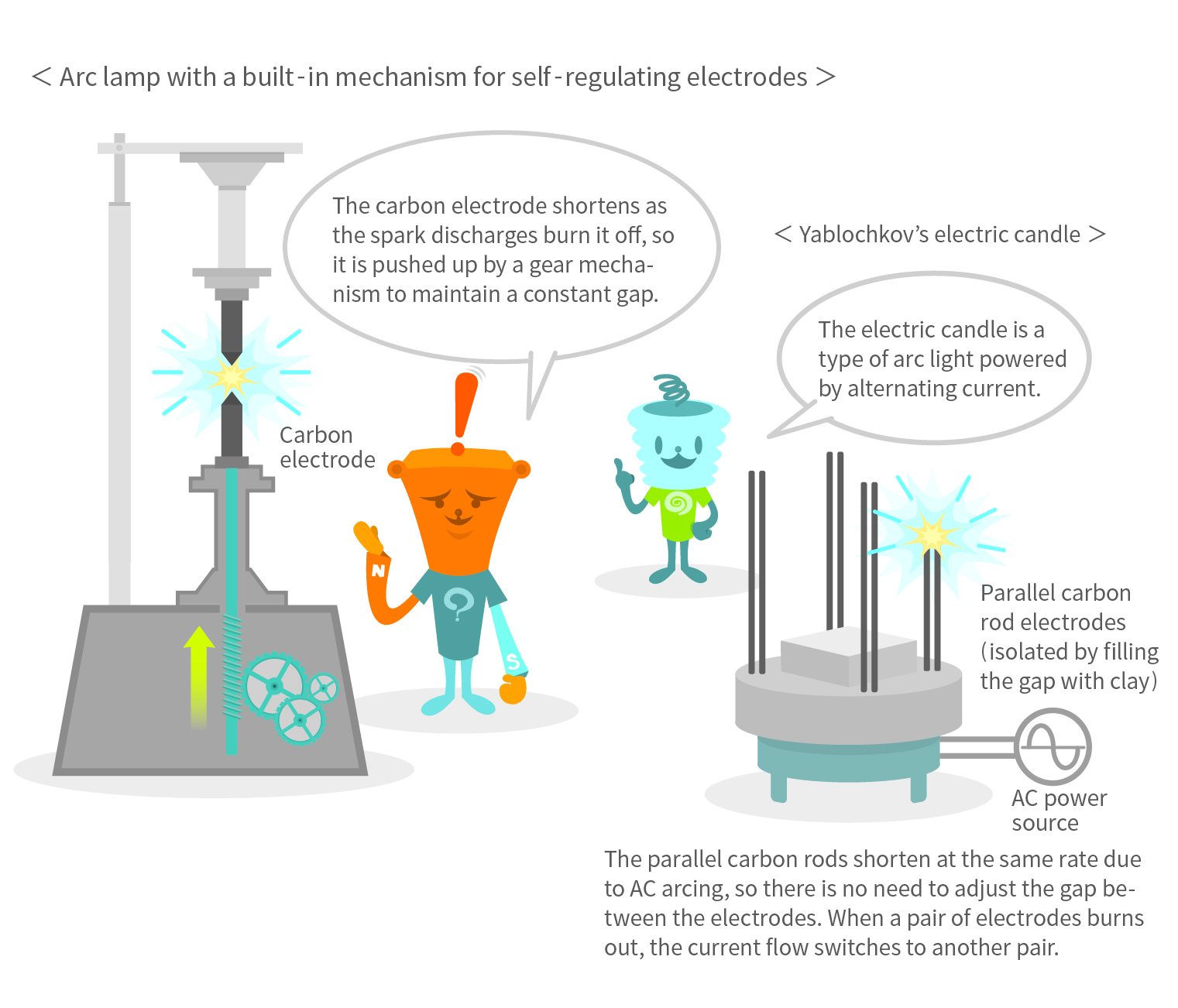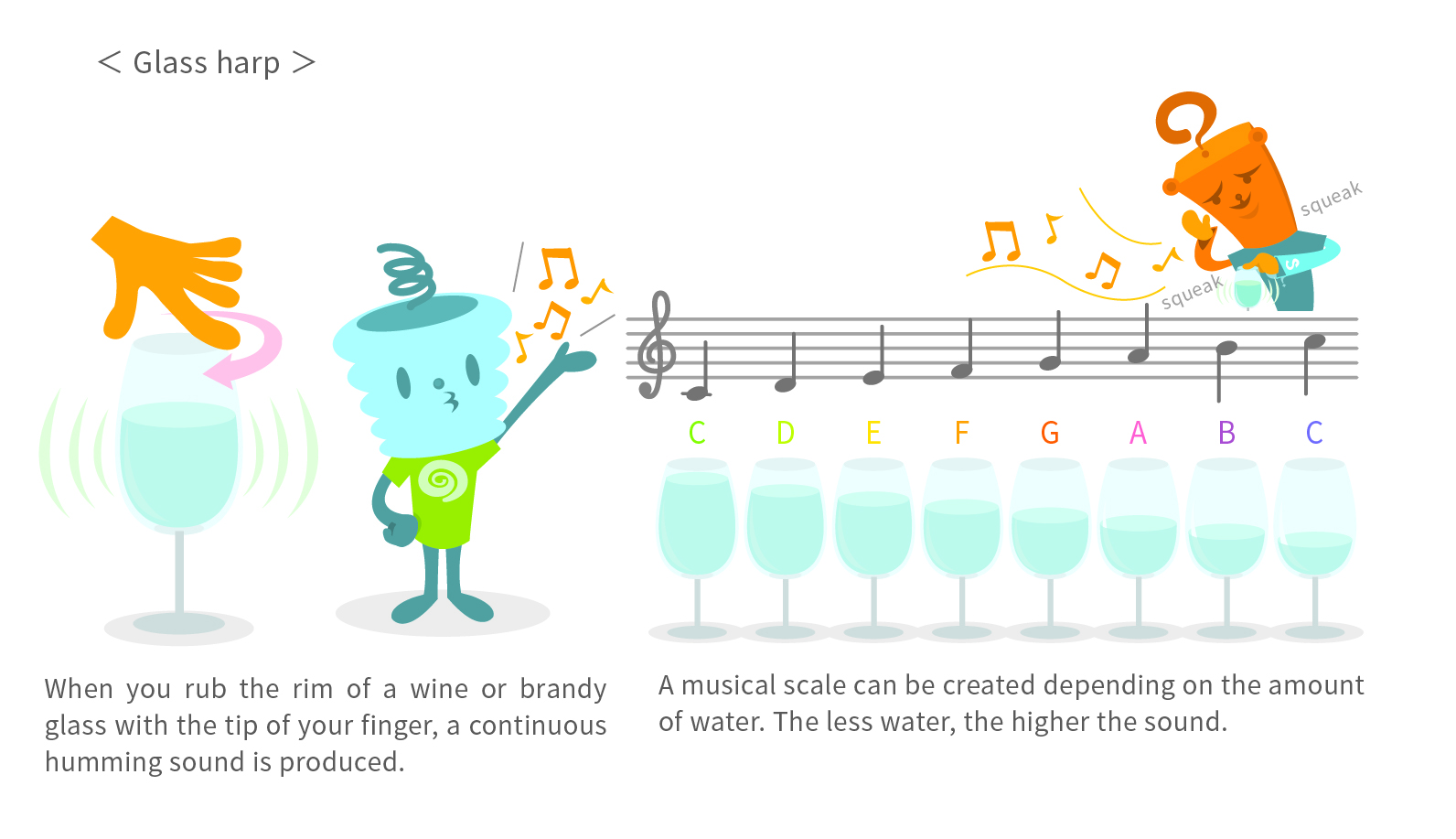
The Wonders of Electromagnetism
vol.6 Taking a hint from the box kite: the Wright brothers' airplane
Taking a hint from the box kite: the Wright brothers' airplane
The Wright brothers achieved the world's first powered human flight in 1903. As exemplified by Leonardo da Vinci's hand-drawn images of human-powered flying machines, the dream of flying has inspired many people throughout history to devise winged contraptions modeled on birds or bats. But, the Wright brothers took a different approach: they built what is now known as a biplane, that is an aircraft with two fixed wings stacked above each other. It is believed that they took a hint from the box kite invented by the Australian Lawrence Hargrave.
A box kite, unlike the common flat kite, is a type of three-dimensional kite with a frame shaped somewhat like that of a rectangular paper lantern. Hargrave constructed kites with various different combinations of rectangular or triangular frames, and also conducted experiments for flying them without strings, using the force of rubber bands or compressed air. The Wright brothers' first plane, called the "Wright Flyer," was the result of many wind tunnel experiments that they conducted, using a box kite as a starting point. It had a gasoline engine built by the brothers themselves, and it became the first maneuverable airplane in the world.
Less well known is the fact that even before Hargrave and the Wright brothers, someone in Japan had been working on the development of airplanes. His name was Chuhachi Ninomiya, and he was a member of the Imperial Japanese Army. Since childhood, he had shown an aptitude for building kites and had observed birds, bats, and flying insects such as dragon flies and beetles. Using bamboo and Japanese paper, Ninomiya built model airplanes with rubber-band propellers and successfully flew them in various experiments. He was a true pioneer of Japanese aeronautical engineering, but unfortunately his work was interrupted and not pursued further.
A special discovery made by the Wright brothers was so-called "wing warping," which consisted of a control stick and wire arrangement that enabled the operator to flex the wings of the plane. This allows manual control over the amount of lift to stabilize the airframe. However, controlling a plane in this way seems to have been quite a difficult feat.
The control systems of modern airplanes have moved on from cables and hydraulic mechanisms to electrically operated motors and actuators that are linked to the cockpit by electrical wire. This is called fly-by-wire and allows interfacing with computers, thereby enabling auto pilot systems as well. Within the space of only one century since the Wright brothers, aviation has made amazing progress such as seen in no other field of transportation.
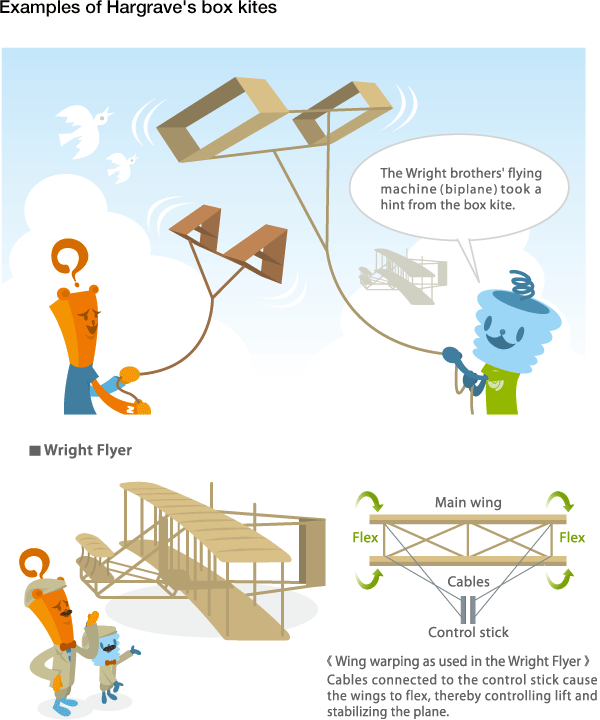
Increasingly electronic modern cars rely on ECU network
Similar to airplanes, where mechanical transfer mechanisms have given way to electric signals driving motors and actuators, so that "fly-by-wire" is now commonplace, automobiles are also increasingly adopting similar systems using electric signals. By way of analogy, these are called "drive-by-wire". For example, when conventional hydraulic steering is replaced by electric power steering (EPS), sensor information is used to control a motor that provides assistive force when the steering wheel is turned. Eliminating the requirement for mechanical transfer increases the degree of freedom when designing a system and can contribute to enhanced safety. Electric brakes to take the place of hydraulic brakes are also being developed. In future, we may well see the conventional pedals of a car disappear.
The brain of a drive-by-wire system is the ECU (electronic control unit). Modern cars may have several tens, and luxury cars as many as 100 or more such ECUs. These are linked with each other in a network referred to as an in-vehicle LAN. Depending on the intended application, there are a number of different standards with regard to such networks, but one that has become a de facto world standard is the CAN (Controller Area Network) bus. A newer development and possible successor to the CAN bus with higher data transfer rates and higher reliability is called FlexRay. There are also other candidates such as MOST (Media Oriented Systems Transport), a standard especially suited for car navigation and multimedia systems.
In the field of automobiles where driving safety is of course a top priority, providing noise protection for in-vehicle LANs is a crucial aspect. Unless proper countermeasures are taken, the cables connecting the various ECUs with each other will act as antennas that emit noise which can be picked up by other peripheral equipment and cause serious problems. Common mode filters are important components in the fight against noise in in-vehicle LANs. They are installed in the individual ECUs that form part of the network.
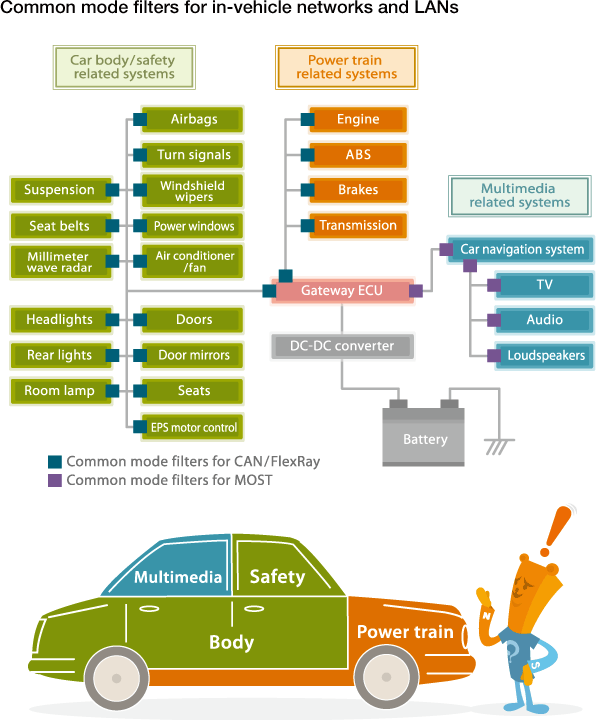
Common mode filters for in-vehicle LANs contribute to safe and pleasant driving
High-speed LAN systems such as CAN and FlexRay installed in automobiles use the differential transmission principle similar to the USB and HDMI interface standards. This involves sending two signals with a phase difference of 180 degrees over a single twisted pair of cables. With old-style shielded cables where a single conductor is used, transfer speed is severely limited, and there are other disadvantages such as weight and cost.
The differential transmission method by principle is quite resistant against noise, but by itself it is also not sufficient. Unless suitable measures are taken, communication links may cause system malfunction due to noise. There are two types of noise that are considered transmission noise: differential mode and common mode noise. The first type resembles a signal current, in so far as it flows in one direction in one conductor and in the opposite direction in the other conductor. By contrast, common mode noise flows in the same direction in both conductors. The major type of noise that needs to be addressed with electronic equipment is common mode noise. Even weak currents of common mode noise can adversely affect the operation of peripheral devices over a wide area.
A common mode filter is a component specially designed to block only common mode noise while leaving the signal current unaffected. The basic construction principle of such a filter involves the use of two same-direction windings on a toroidal core. However, toroidal cores are not suitable for automated winding, and reducing their dimensions is also quite difficult. To solve this dilemma, placing the windings on a drum core and then attaching a flat plate core to create a closed magnetic circuit is a promising approach. The resulting common mode filter is a small electronic component only a few square millimeters in size. It is found in countless electronic devices used in daily life, such as computers, television sets, DVD recorders and so on.
In recent years, the trend in the automotive sector is towards lighter weight and lower cost, and ECUs are increasingly positioned within the engine room. This of course makes for a very challenging installation environment. Furthermore, effective suppression of radio band frequency components is particularly important in a car. In response to these requirements, TDK has perfected the ACT45 series of common mode filters for in-vehicle LANs such as CAN and FlexRay. The use of highly temperature-resistant wiring and an innovative connection method result in a wide usage temperature range from -40 to +150 degrees centigrade. Outstanding resistance against thermal stress, shocks, and vibrations is guaranteed by the excellent structural reliability, and high inductance is also realized. Thanks to these characteristics, the products make an important contribution towards enhanced safety and more comfortable driving.
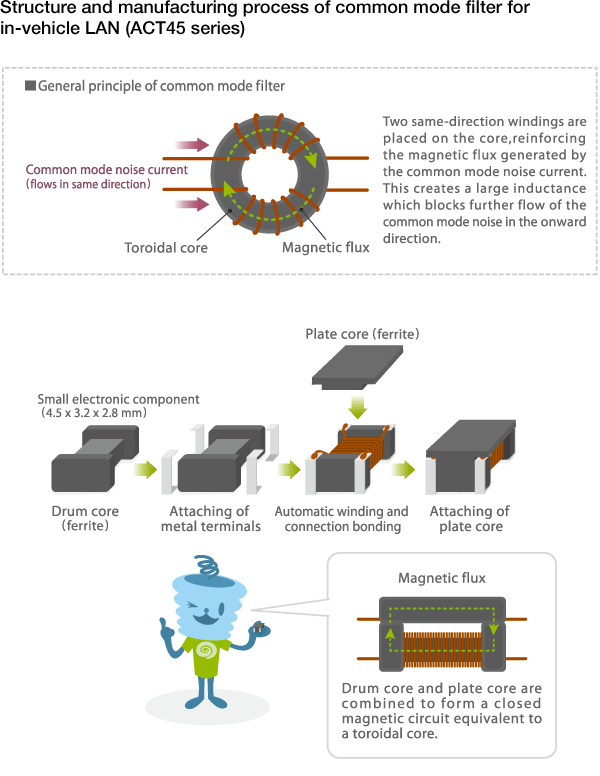
TDK is a comprehensive electronic components manufacturer leading the world in magnetic technology



